A superb itinerary that will allow us to "dive" into the heart of Uzbek culture and flavours of the East. We will first go on the Silk Road to discover the unmissable cities of Samarkand, Khiva, Bukhara and Chakhrisabz and then, it will be a total immersion in the Oriental ancestral traditions to celebrate, within the villages, in the company of some families, the Navrouz, now inscribed on the UNESCO World Heritage List. Indeed, of Persian origin, this tradition has been perpetuated since the dawn of time, long before the arrival of Islam. This celebration actually celebrates the arrival of spring in the oases. During this period, the excitement throughout the country is at its peak. Cavalry contests: Bouzkachi, cock fights, wrestling contest (kurash), sowing ritual, food offerings, songs, music and dances with brightly coloured traditional costumes are in the spotlight... A unique event that we will live in the company of villagers where we will also taste soumalak, a traditional dish made mainly for this occasion. An unforgettable party!
Discover the agency :
VIAMONTS TREKKING
12 days
From : €2,105*
Maximum recommended reservation date
31/12/2021
Sarah
Sarah will help you if you have some doubts regarding the choice of the destination. She skillfully manipulates technical tools related to your registration and will “fight” for your travel became THE trek of your life!
Day 1: Paris - Tachkent
Day 2: Discovery of Tachkent
Day 3: Tachkent - Samarcande
Day 4: Samarcande - Village of Kounghirot - Samarcande
Day 5: Samarcande - Navrouz Festival (2nd day)
Day 6: Samarcande - Chakhrisabz - Samarcande
Day 7: Samarcande - Gijduvan - Boukhara
Day 8: Boukhara
Day 9: Boukhara
Day 10: Boukhara - Khiva
Day 11: Khiva - Ourgentch - Tachkent
Day 12: Tachkent - Paris
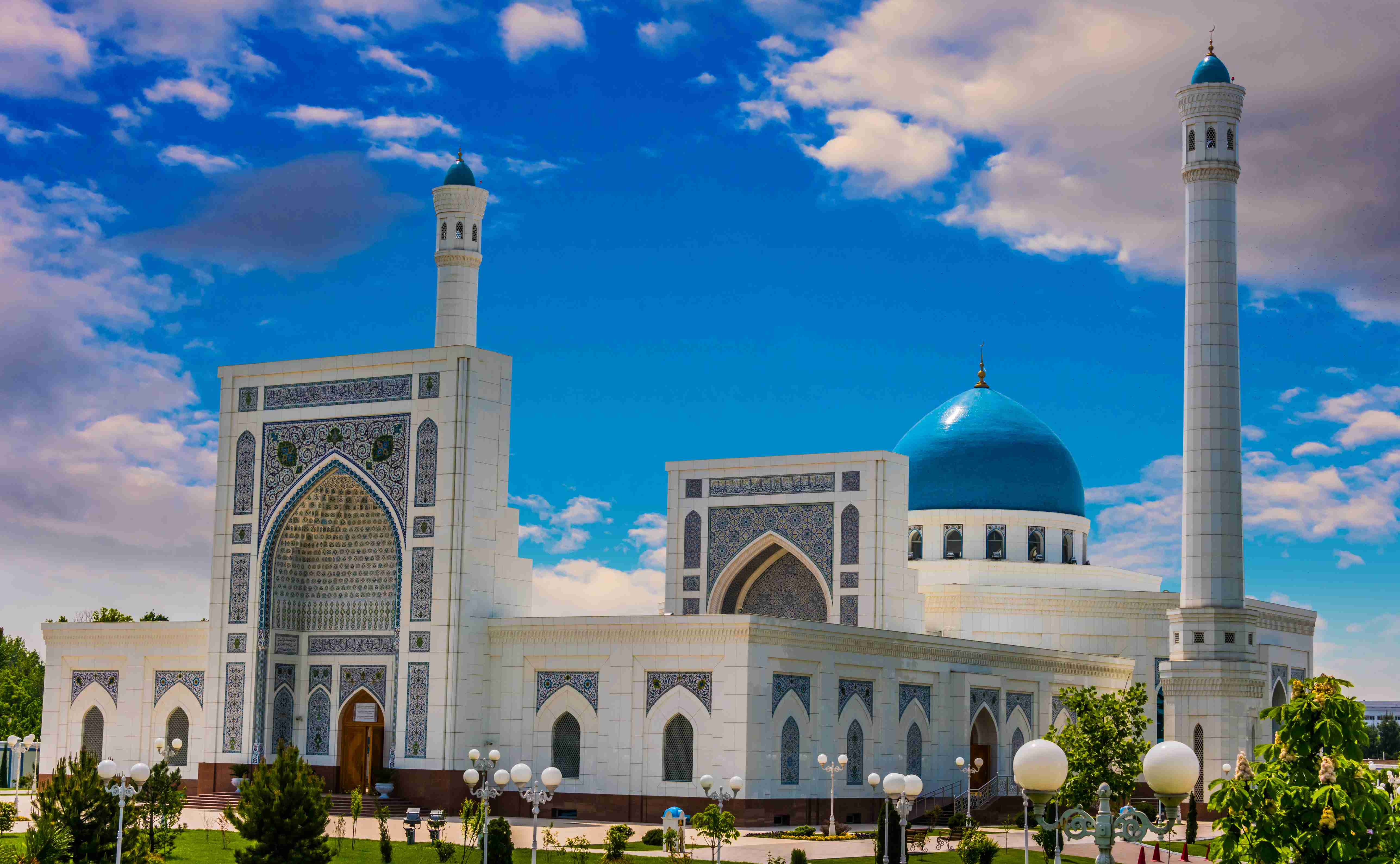 ©monticelllo
©monticelllo
Flight to Tachkent.
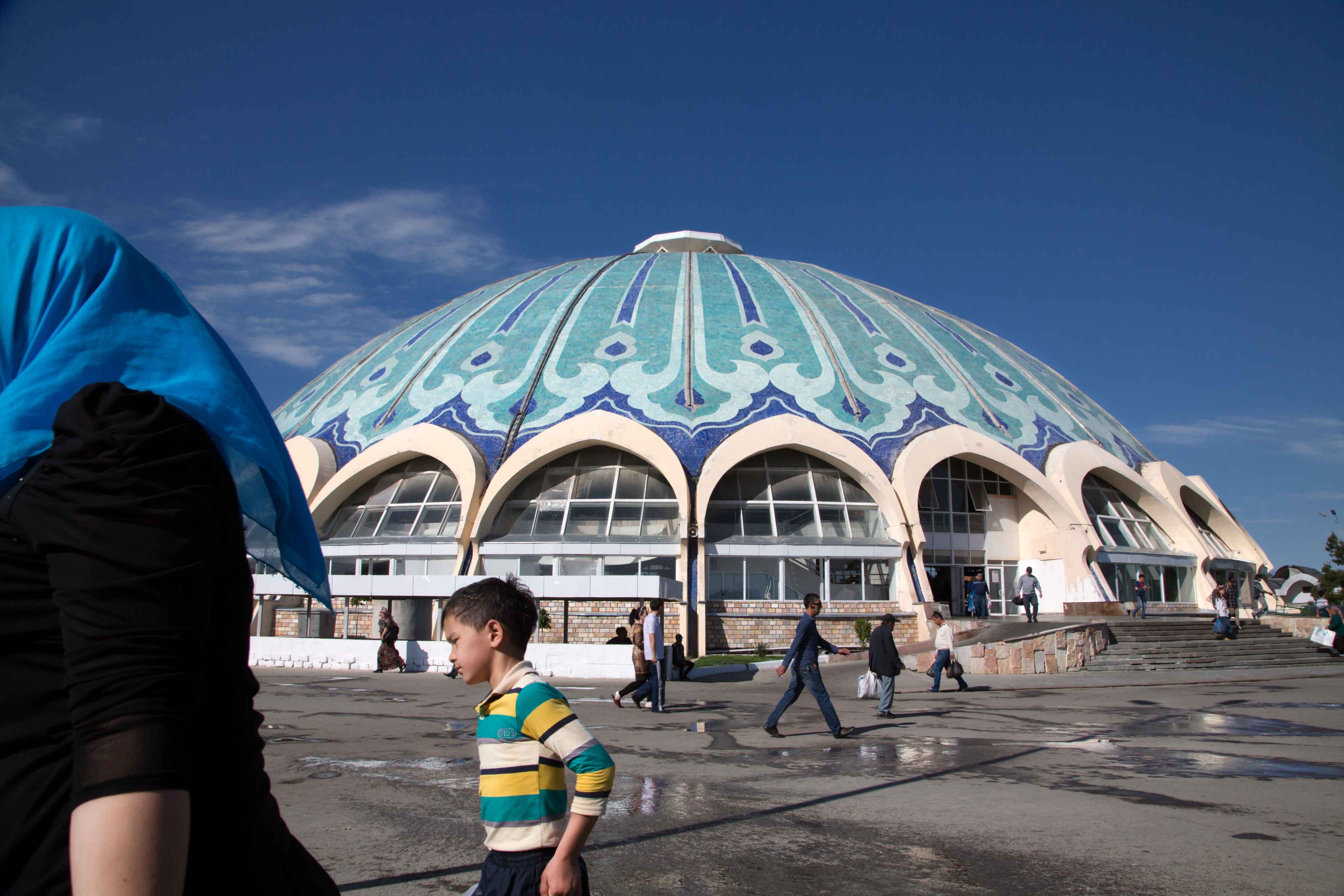 ©Pascal Mannaerts – www.parcheminsdailleurs.com
©Pascal Mannaerts – www.parcheminsdailleurs.com
Reception at Tashkent airport by our team then transfer to hotel for breakfast. Then discover the Uzbek capital, at the crossroads of the «Silk Road» and the «Gold Road» which came from Siberia. With its open-air markets and parks with the typical vegetation of the oases of the region, visit the Museum of Applied Arts located in the sumptuous residence of Prince Polovstev; this museum houses above all rich collections of traditional Uzbek handicrafts… then discover the ancient city, the colourful bazaar of Tchorsu. Overnight in a hotel.
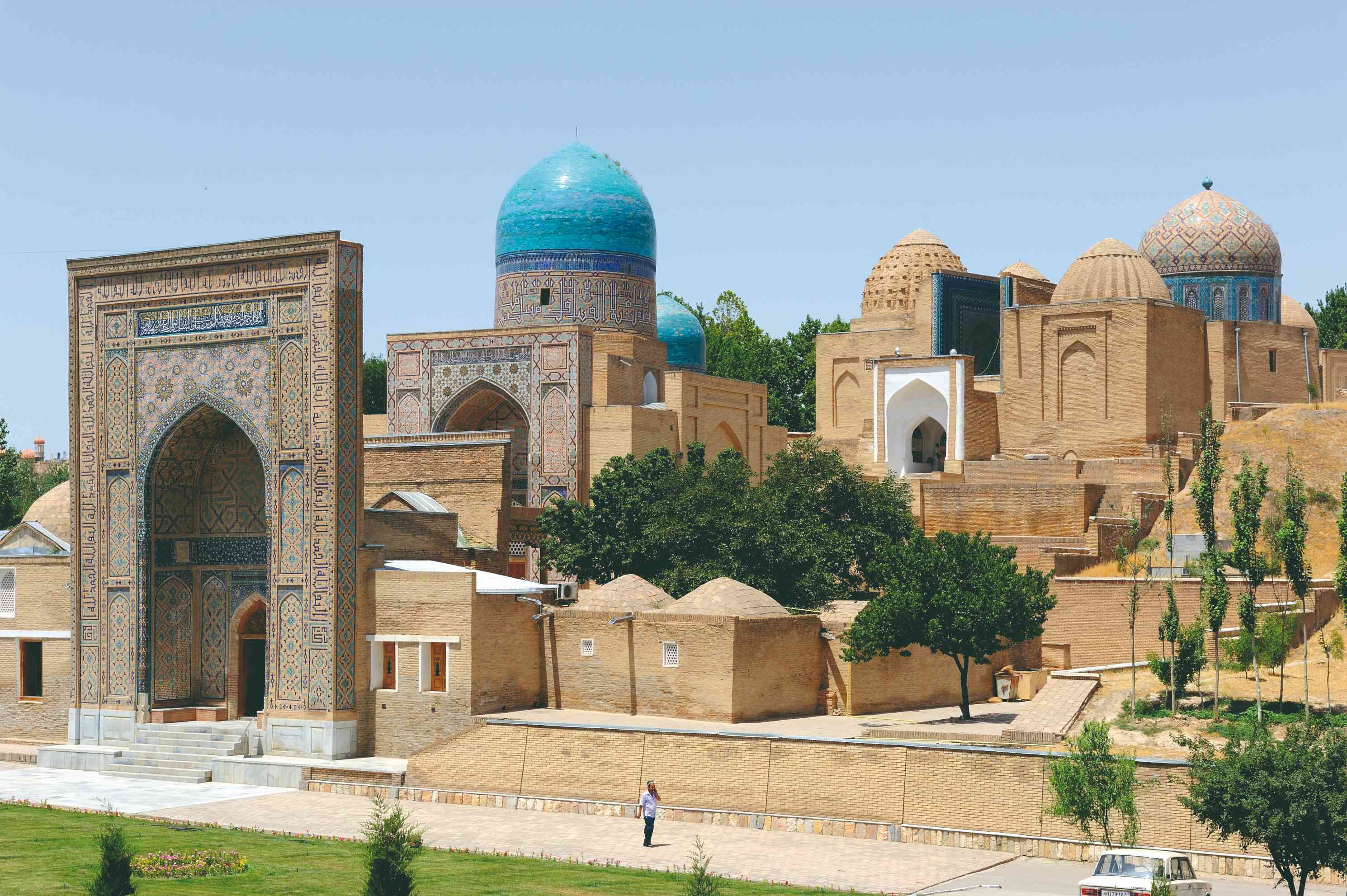 ©Patrice ALCARAS
©Patrice ALCARAS
Morning transfer to the railway station to take the fast train "Affrossiyob" to Samarkand. Arrival and installation at the hotel then visit of the city. Samarkand was the trade hub on the Silk Road; the caravans came from China, India, Iran... it was the main city of ancient Sogdiane and still retains its fabulous glazed domes and its walls and mausoleums with bright colours. First discovery of the necropolis Shah i Zinda "King alive"; it is an alley that climbs on the hill of Afrossiyob; it once led to the gates of the ancient city. It is in this alley that was built in XI century the mausoleum of Qassim-ibn Abbas then, other tombs and mausoleums were later built around. But during the invasion of the Mongols, only the mausoleum of Qassim-ibn-Abbas was spared. He then visited the Afrossiyob Museum and the Oulougbek Observatory, built in 1429, where he worked and taught with 70 mathematicians and astronomers. In 1710 a museum was inaugurated in honour of Oulougbek and copies of the Sultanian tables and their translations are preserved... After lunch at the typical restaurant of Karimbek, continue the visit towards the Bibi Khanum mosque that Tamerlan had built in 1399 giving it the name of his wife. We will then arrive at the largest square in Central Asia, Reghistan Square. Its name means "sandy square" in Persian; it is delimited by three madrasas, that of Oulougbek, that of Tilla Kori and that of Dear Dor. Dinner at the restaurant "Platane". Overnight in a hotel.
Duration of visits: The day.
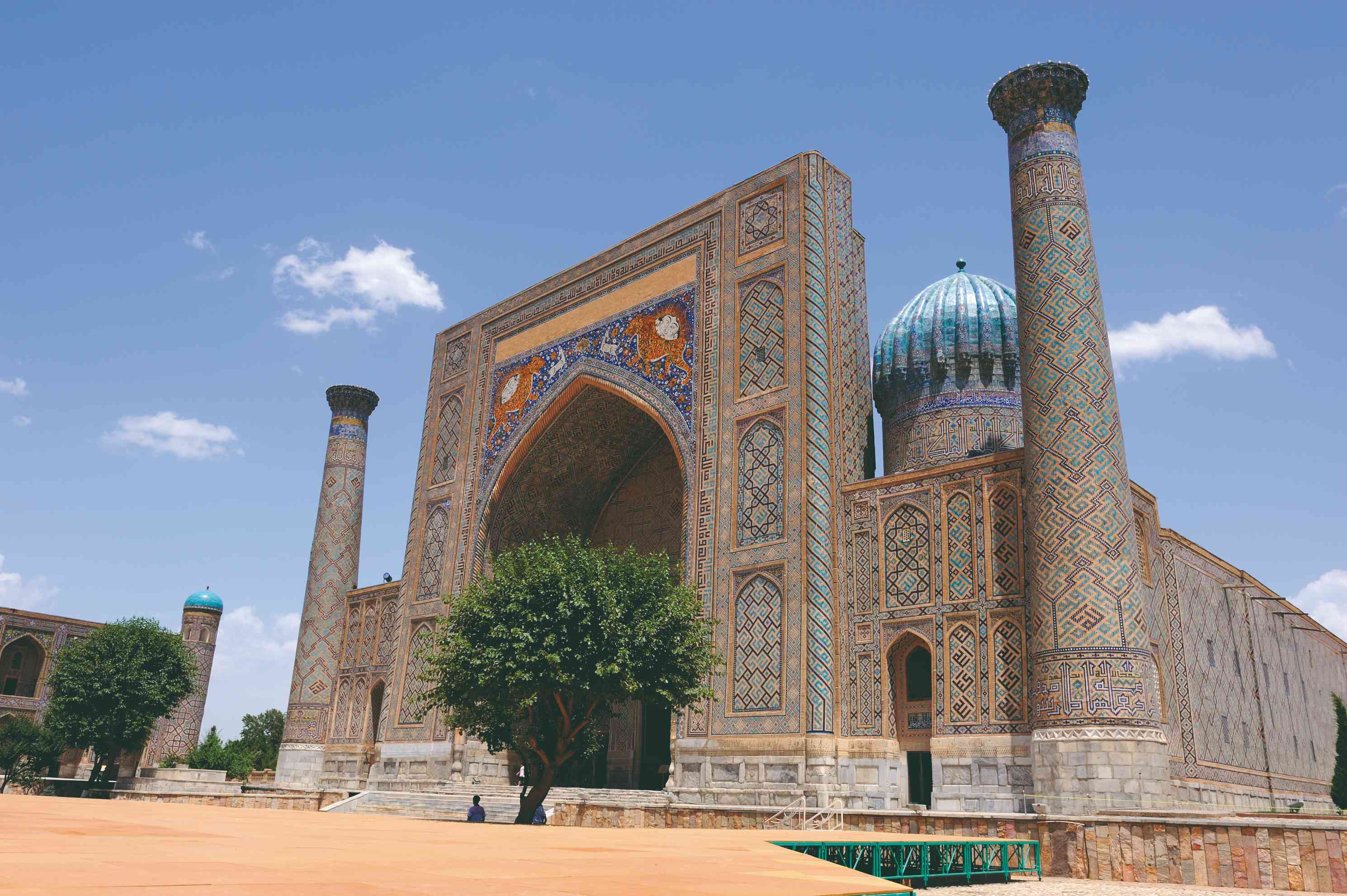 ©Patrice ALCARAS
©Patrice ALCARAS
Departure for the small village of Kounghirot; passage to the Konigil where we will visit a silk paper workshop. Discovery of the entire manufacturing process, from raw material to finished work. Then continue to the village of Kounghirot where we will be welcomed by a family preparing the festival of Navrouz. We will attend, in their company, the production of the Soumalak, traditional main dish made during this event. Then we will taste various spring dishes. Discovery of the village and participation, in the company of the villagers, in the festival of Navrouz, with demonstrations of traditional songs and dances of the region. Return to Samarkand in the late afternoon and dinner in a local restaurant. Overnight in hotel.
Duration of visits: The day.
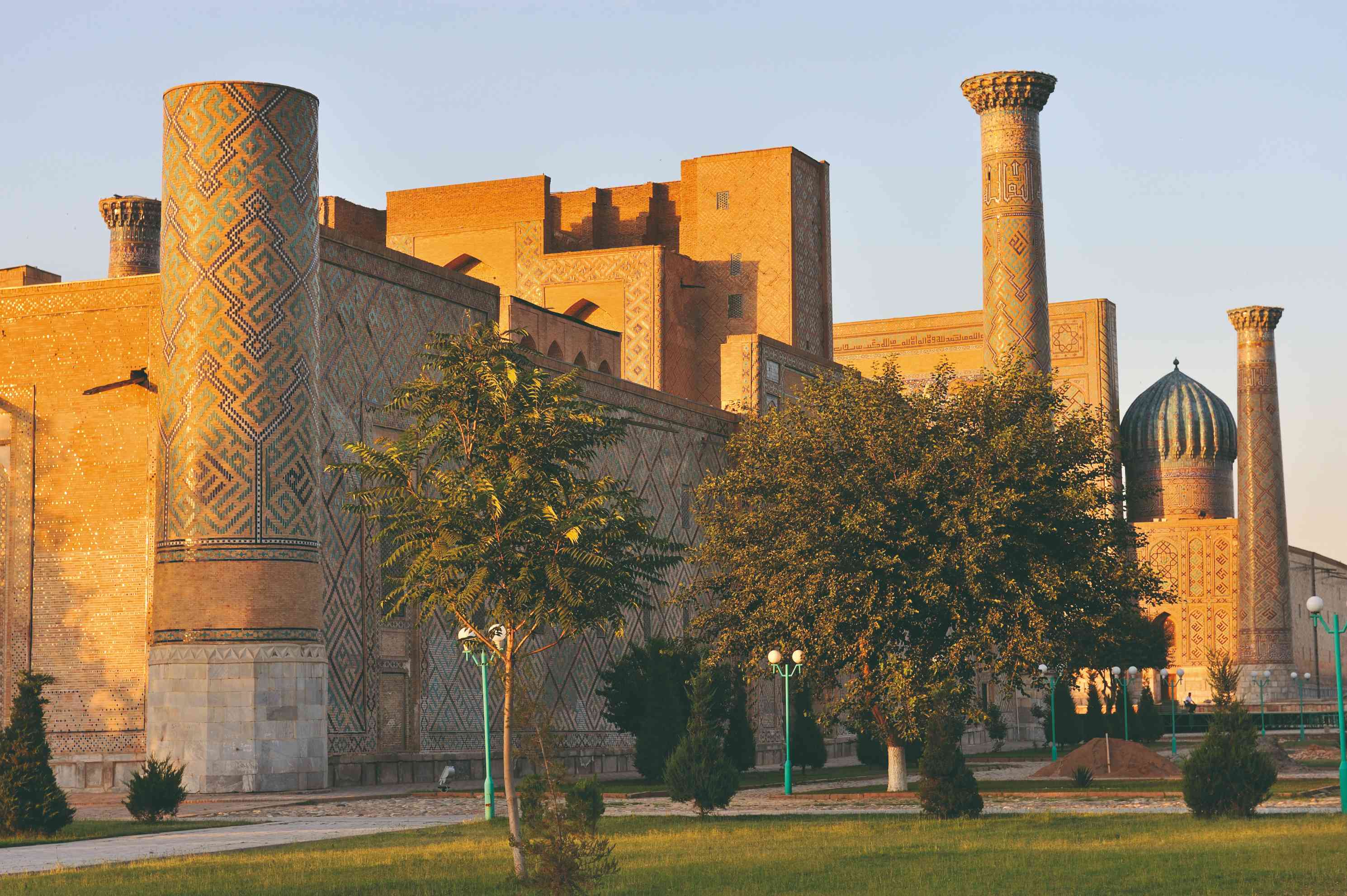 ©Patrice ALCARAS
©Patrice ALCARAS
March 21 is the festival of Navrouz, the Eastern New Year, the day of the spring equinox. In the central park of Samarkand, it is in the company of the people of the city that we will discover the ancestral traditions of Central Asia where are mixed costumes and folk dances, fights of struggle (kourash), fights of cocks, the culinary competitions but also the famous bouzkachi, a spectacular cavalry contest coming from ancient times. We will also taste traditional dishes made only once a year at this event. After lunch in a local restaurant, continue the city tours with the architectural complex Nodir Devonbeji, the mausoleum Ishratkhona built in the second half of the 15th century by Tamerlan. Ishratkhona became the tomb of the women and children descendants of the Timourids (Tamerlane people). Continue the discovery of Samarkand with the holy place Kodja Abdou Daroun, a true haven of peace with its gardens and its large basin surrounded by tall trees; Then arrived at the mausoleum of Saint Daniel whose body Tamerlan brought back from Persia around 1400 and put it in this mausoleum that bears his name today. Dinner at a local restaurant then return to the hotel.
Duration of visits: The day.
Note: Although the Navrouz date is March 21, this festival lasts for one week. In Samarkand, this event often takes place before (18, 19 or 20). It is impossible to know precisely this date; it is decided three days before, according to the weather! This is the reason why the program will be able to have some adjustments so that you can live this festival fully; at that time, the visits of the caravan cities will all be respected but can be in a different order than the one mentioned on the program.
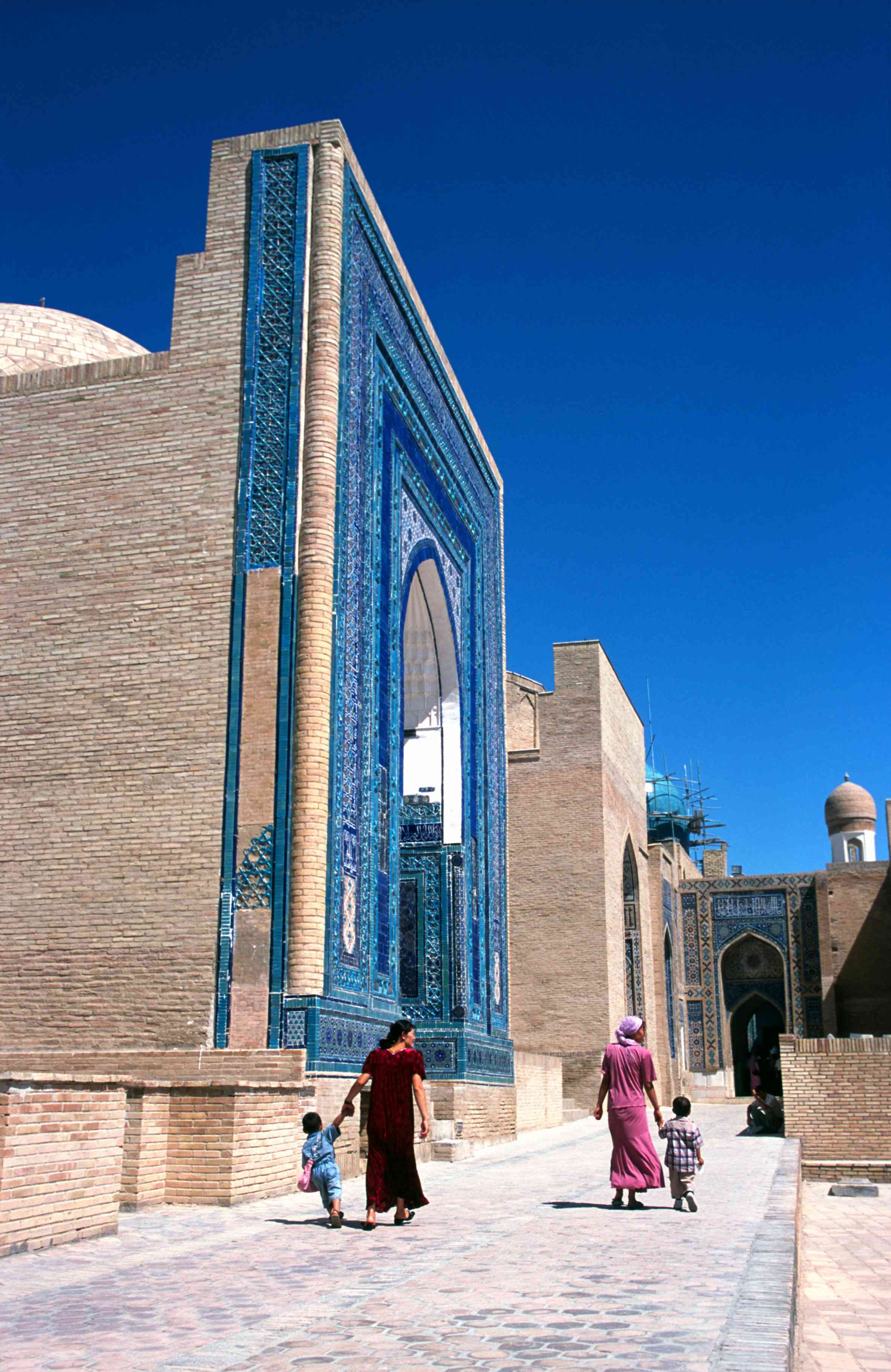 ©Robas
©Robas
Departure for Chakhrisabz, the ancient Sogdian Kech located at the foot of the Zerafshan mountains. Chakhrisabz saw the birth of Tamerlan in 1336... This beautiful little town, with its colourful bazaar, is also full of palaces and mausoleums. Visit of the White Palace also named Ak sarai (XIV century); the impressive remains of the Palace offer a huge entrance porch to the sublime earthenware... Also discovered is the Kok Goumbaz Mosque (1436), so called because of its superb blue dome; visit the Khazret Imam Mosque and the Gumbazi Seidan mausoleum. Gumbazi Seidan was built by Oulougbek in 1437 for his family. It is square and looks strangely like the mosque that looks at him. Lunch at the family restaurant "chez Alicher" then return to Samarkand. On the road, stop at the village Arabbandi to visit a family that manufactures traditional kilims (carpets). Dinner at the homestay then return to the hotel in Samarkand.
Duration of visits: The day.
Note: It may be that on the way from Samarkand to Chakhrisabz we come across the famous cavalry joust called "Bouzkachi"; if this is the case, we will attend it because neither the places nor the dates of this ancestral game are decided in advance... but during the period of Navrouz, there is a very good chance that this game will take place in this area.
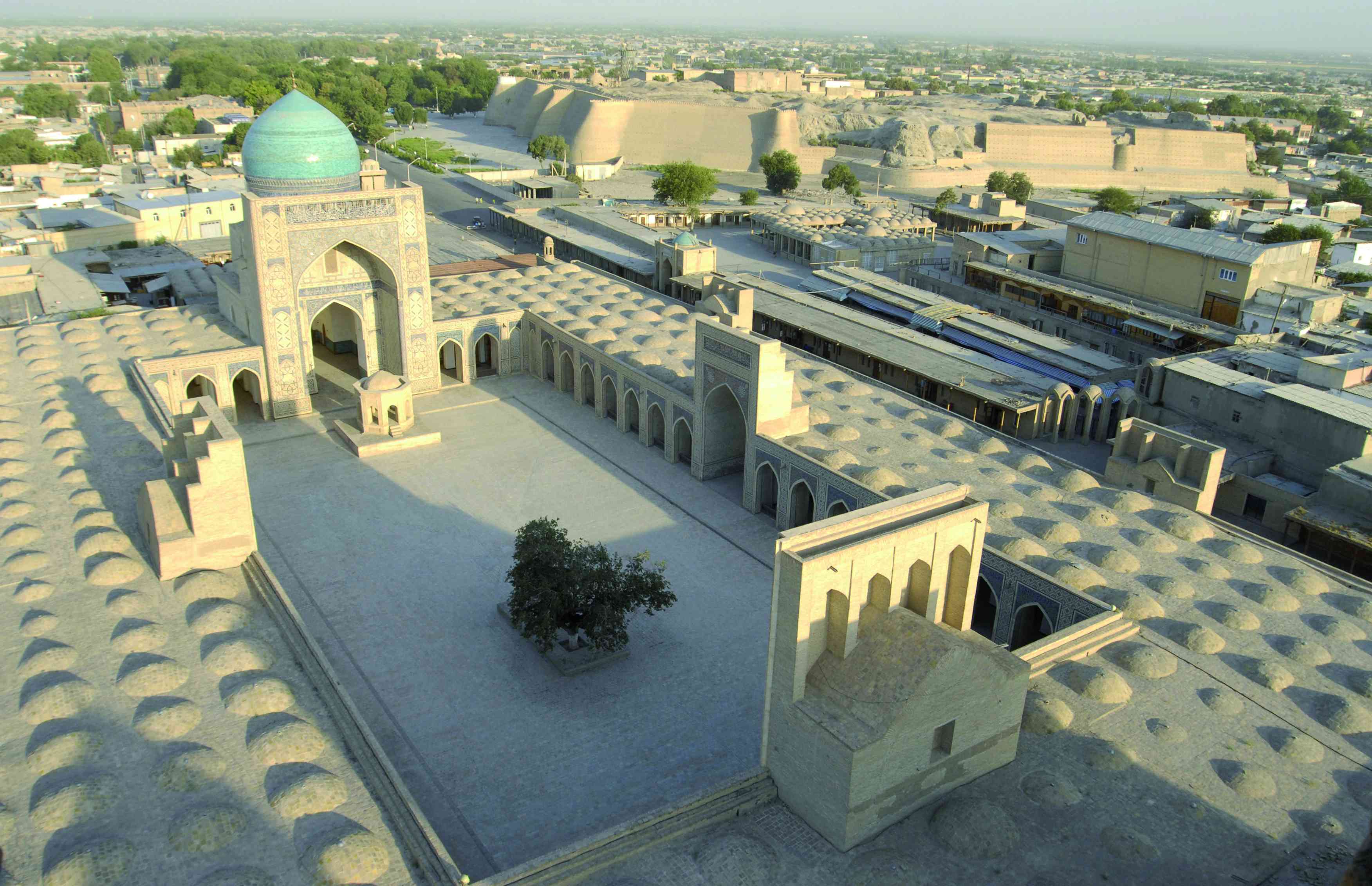 ©Jeff Jones - Iconotec
©Jeff Jones - Iconotec
Departure for Bukhara, the famous city being one of the three emblematic cities of the Silk Road. Before reaching Bukhara, we will stop at the mausoleum of Ismail Al Boukhaiy, one of the greatest scholars of the year 870 AD. J-C; then we will make a second stop in Karmana to discover the remains of the caravanserail of Malik Robot and Sardoba with its water source located on the caravanary road; we will also visit the potter of the village of Gijduvan, in order to have lunch and discover his job in his workshop. Continuation of the road to Bukhara, arrival in the middle of the afternoon; installation at the hotel then first walk/ discovery of the city. Two whole days will be necessary to contemplate the 140 fabulous monuments of this caravan town. It was, in the 10th century, an important Muslim religious and intellectual center during the reign of the Samanids. It was then destroyed by the Mongols and later restored by Tamerlan. Discovery of this architectural evolution samanide, seljuq, timouride then cheybanide, which left us this ocean of turquoise domes, tapered minarets, madrasas, mausoleums and mosques with imposing facades of ceramics in all shades of blue. We will make a first stop at the mausoleum Magoki Attari, built on the remains of a Zoroastrian temple; it is the oldest mosque of Bukhara; then visit of the madrasa Tim Abdoullakhan being part of the set of Koch madrasas; its orientation is not towards Mecca but according to the cardinal points; continuation by the market of Toki Telpakfourouchon (market of the hatters), then by that of the money changers, Toki Sarrafon. Dinner at a local restaurant, overnight in a hotel.
Duration of visits: The day.
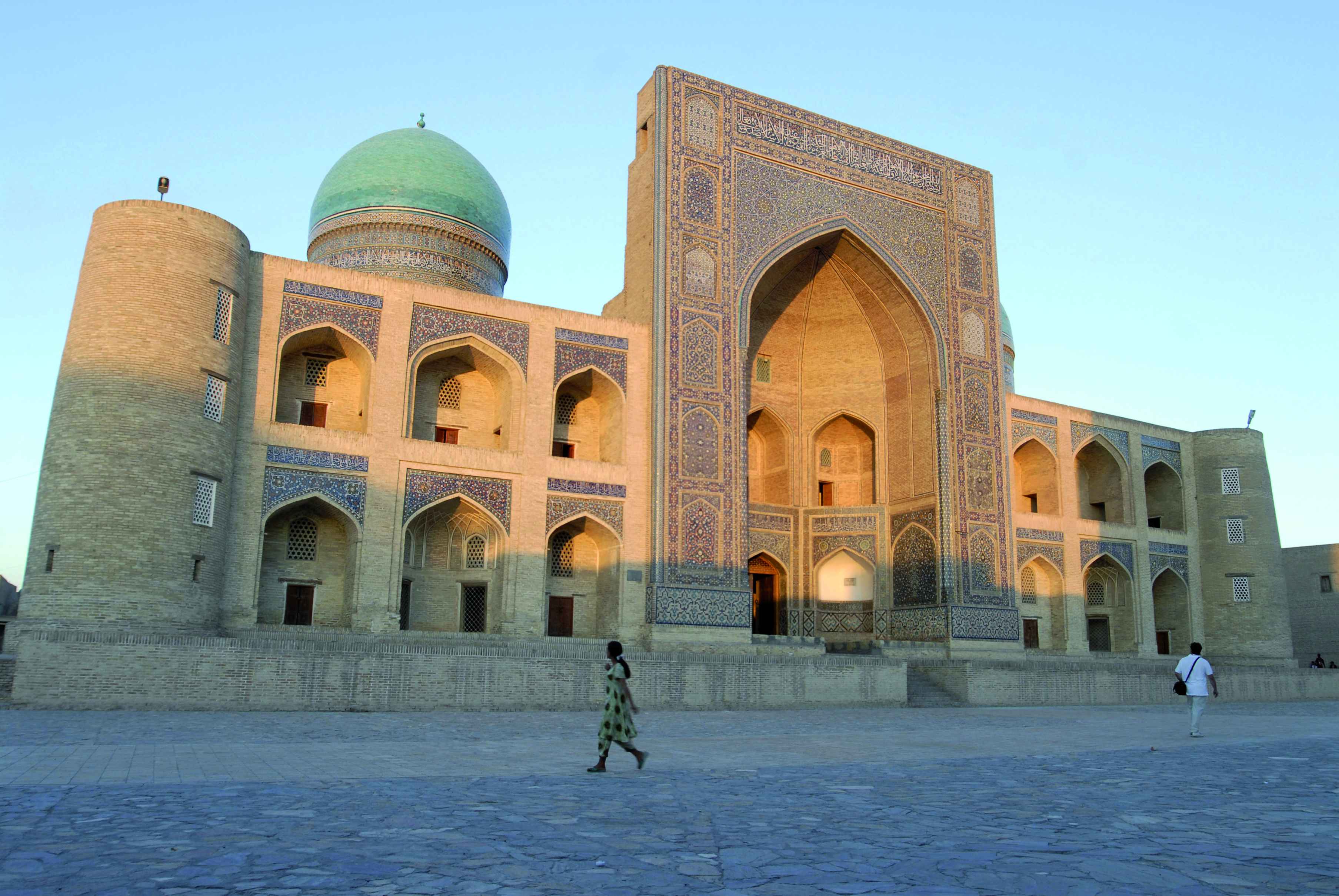 ©Jeff Jones - Iconotec
©Jeff Jones - Iconotec
Discovery in the morning of the mausoleum of the Samanids (XIth century); it is the oldest building of Bukhara; it is also called the mausoleum of Ismail Samani; continuation by the mausoleum Tchashmai Ayub also called "Source of Job" renowned for curing skin diseases; discovery also of the water museum; continuation of the visit by the bazaar, a set of commercial domes built in the XVIth century, then arrived at the mosque Bolo Khaous (XVIIth century) and the citadel of the Ark, formerly residence of the Emir. Lunch in a local restaurant (the tea house) then continue visits with the medersa Nodirdevon Begi and Koukaldosh. Discovery of the Oulougbek and Abdoulazizkhan madrasas. Arrival on the Povi Kalon complex with its mosque, its minaret and its madrasah Mir Arab. Dinner in a local restaurant, overnight in a hotel.
Duration of visits: The day.
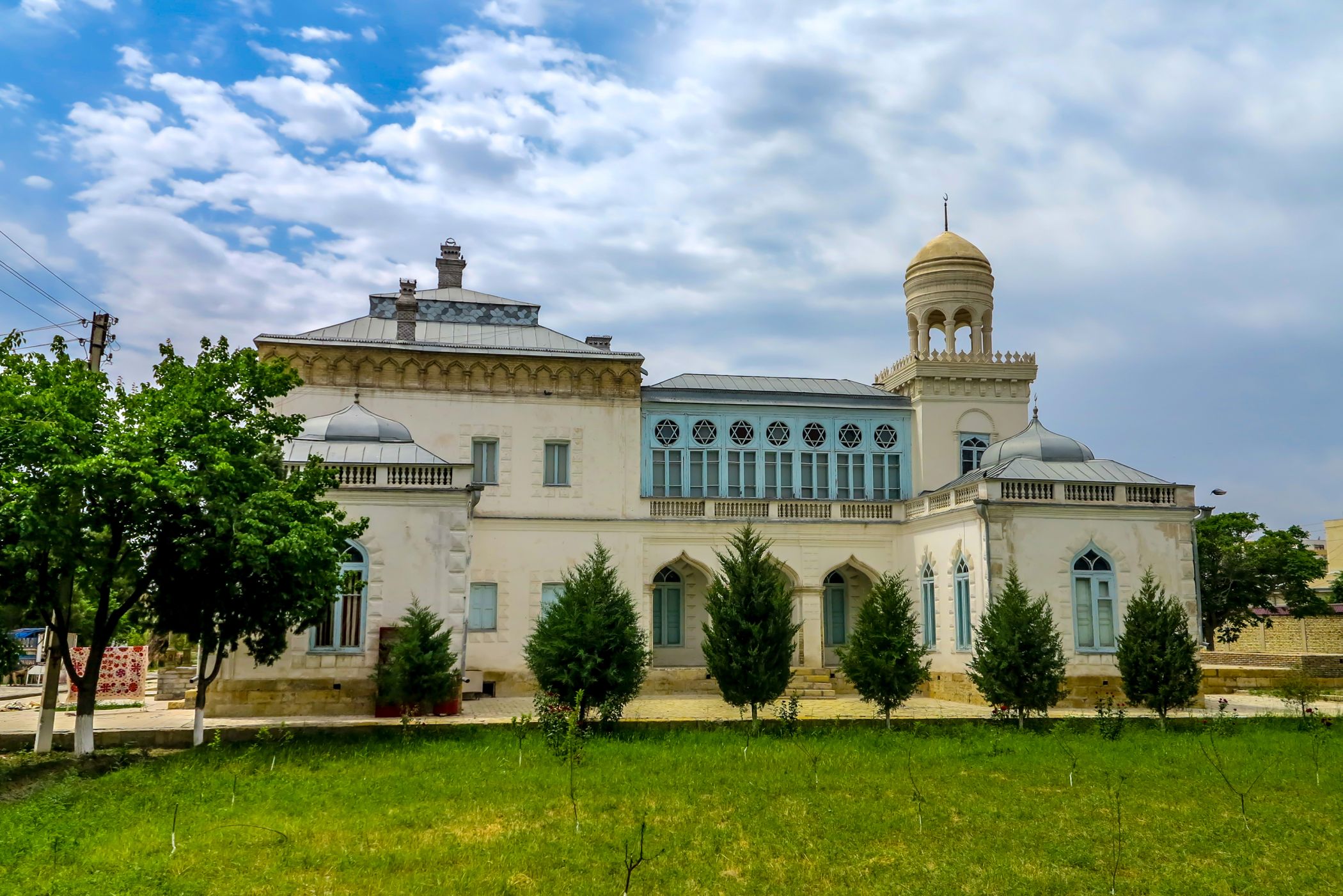 ©AlexelA - Shutterstock.com
©AlexelA - Shutterstock.com
We leave outside the city and make an excursion "extramuros" to discover the architectural complex Bakhouviddin Naqishbandi, with the famous tombs of the Sabanide dynasty and its mosques of the XIXth century. After discovering the summer palace of the Emirs Sitorai Mokhi Khossa, return to town then lunch in a local restaurant. Depending on availability, we will certainly attend a Bukharian folk concert. Dinner in town in a local restaurant, overnight in a hotel.
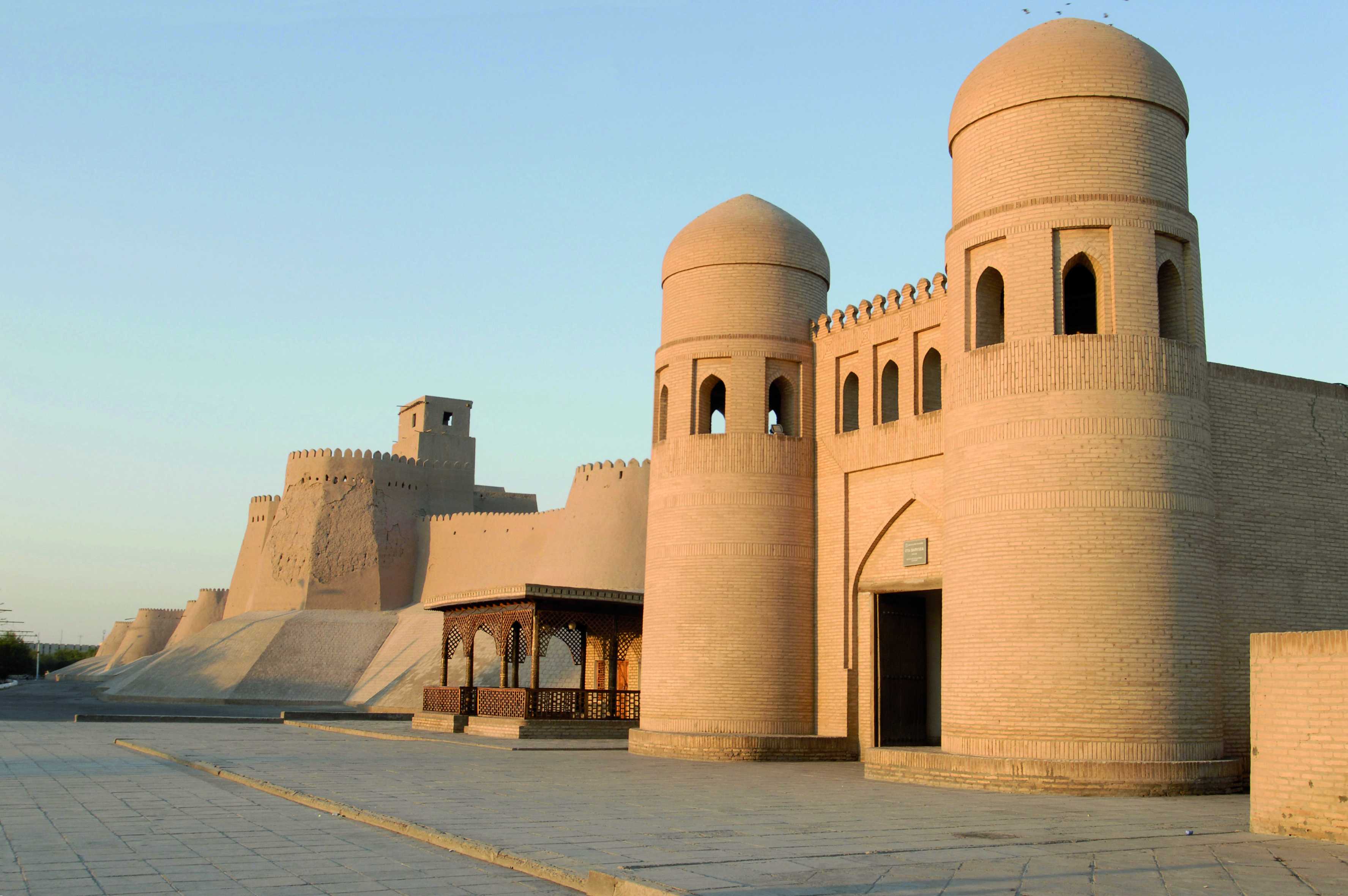 ©Jeff Jones - Iconotec
©Jeff Jones - Iconotec
Departure from Bukhara and crossing the arid steppe at first, then the desert of the red sands of Kizil Koum will impose us its large expanses crossed by the blue waters of the river Amou Daria formerly called the river Oxus of Alexander the Great. Arrival in Khiva in the late afternoon. Dinner and overnight in hotel.
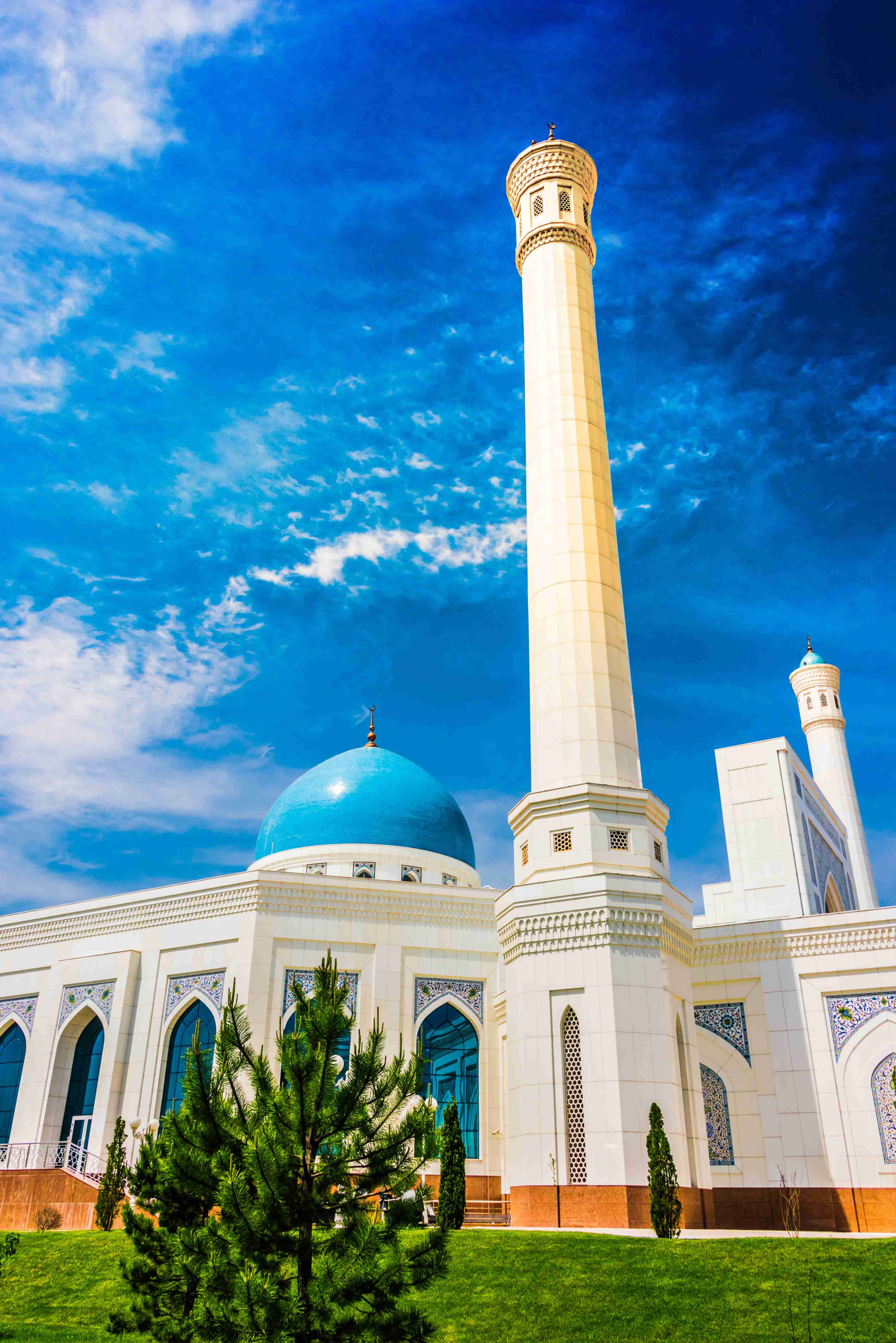 ©monticelllo
©monticelllo
The city of Khiva is the most isolated of the oases of the ancient Silk Road; it is today intact. Khiva was one of the biggest markets of all Central Asia; the inner city, the Itchan Kala, is today a real open-air museum where mosques, madrasas, mausoleums or other caravanserai are revealed... Khiva has many monuments, but it also has a unique architectural complex in Central Asia. The ancient traditions are still present and the walker, when he enters in Khiva, sees himself suddenly propelled in another time, at the time of mirages and miracles... The pink clay ramparts that surround this legendary city, sheltered many scholars such as Avicenna, the great doctor and philosopher or Al Khawarizmi the father of logarithms... Discovery of the truncated minaret of the Kalta Minor which raises towards the sky the learned canvas of its ceramics with blue dominant; the Djuma mosque which leans on its 218 finely decorated wooden columns; the palace of Tach Khaouli with its famous harem which reflects well the opulence and extravagance of the potentas of then; the ramparts of Kounia Ark and the ancient citadel which dominate the city-museum and its monuments... Continuation of the visits with the Pahlavon Mahmoud mausoleum, the Islamkhodja madrasah with its minaret, the bazaar, the Koutloug Inak Mourad madrasah and the residence of the Khans: Kukhana Ark as well as the Khoudoyberdi Devonov museum, first Uzbek photographer. If the weather permits, dinner in the open air, at the tea house, in the superb setting of the minaret Kalta Minor. Transfer to the airport for the flight to Tashkent and then installation at the hotel.
After breakfast, if the hours of flight permit, visit of the ancient city with the madrasa Koukeldash, which means "friend of the heart"; thus were named the dignitaries of trust of the sultan; it is the most important of the 23 madrasas that Tashkent houses in its walls; then discovery of the madrasah Barak Khan, the mausoleum Kaffal Chachi (Abu Shashi), doctor of Islam, philosopher and poet who lived from 904 to 979 and who was one of the first local Islamic prophets. You can also see the Coran of Ousman, one of the oldest examples in the world that the mosque of the Khazrat Imam center houses. Lunch at the restaurant then continuation of visits in the afternoon with a walk/discovery at the Tchorsu bazaar. After dinner, transfer to the airport then flight to France.




Each Travel Idea is customizable according to your wishes

